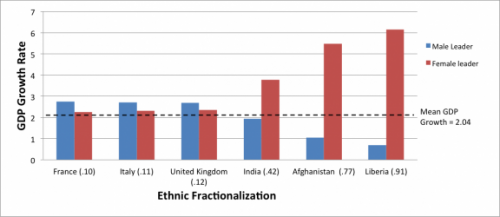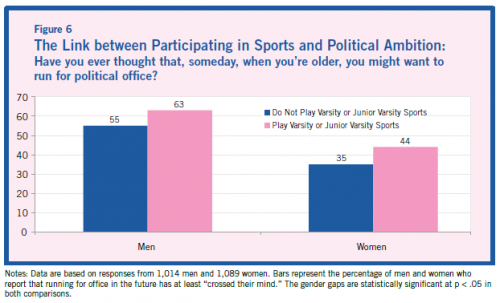Countries with a lot of ethnic diversity generally show weaker economic growth than homogeneous countries. A new study, however, discovered a variable that strongly reverses the trend: women leaders.
Management professor Susan Perkins and her colleagues compared the economic growth rate of 139 countries over 55 years. They found that diverse countries did significantly better when a woman was at the helm. The more diverse the country, the stronger the effect.
Perkins and her co-authors cautiously attempt to explain their data (here), but think that it may have something to do with leadership style. Female leaders have been shown to be more collaborative and non-authoritarian than men. Co-author Nicholas Pearce speculates:
In countries with a lot of internal conflict, oftentimes people are looking for signals that the person in charge is going to be collaborative and not dictatorial or self-interested. Women’s gender role is symbolic of collaboration, that they’re going to empower marginalized voices.
Because of gender stereotypes, then, women may seem more trustworthy. Meanwhile, real differences in leadership style may affirm those expectations and be more effective in practice.
Lisa Wade, PhD is an Associate Professor at Tulane University. She is the author of American Hookup, a book about college sexual culture; a textbook about gender; and a forthcoming introductory text: Terrible Magnificent Sociology. You can follow her on Twitter and Instagram.







